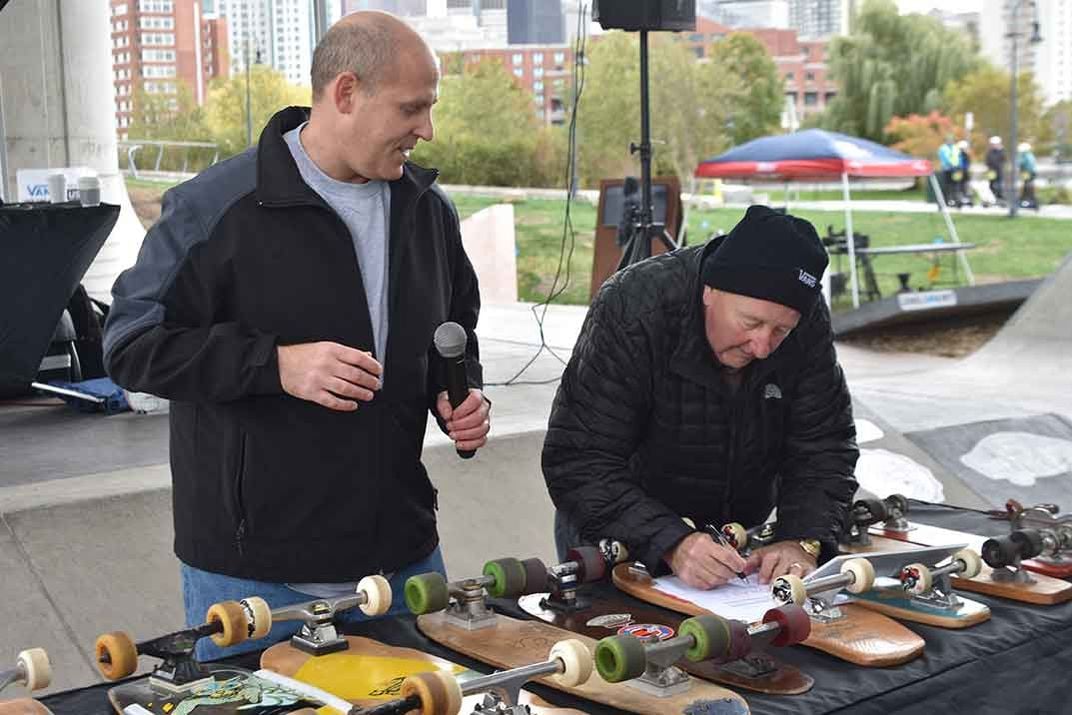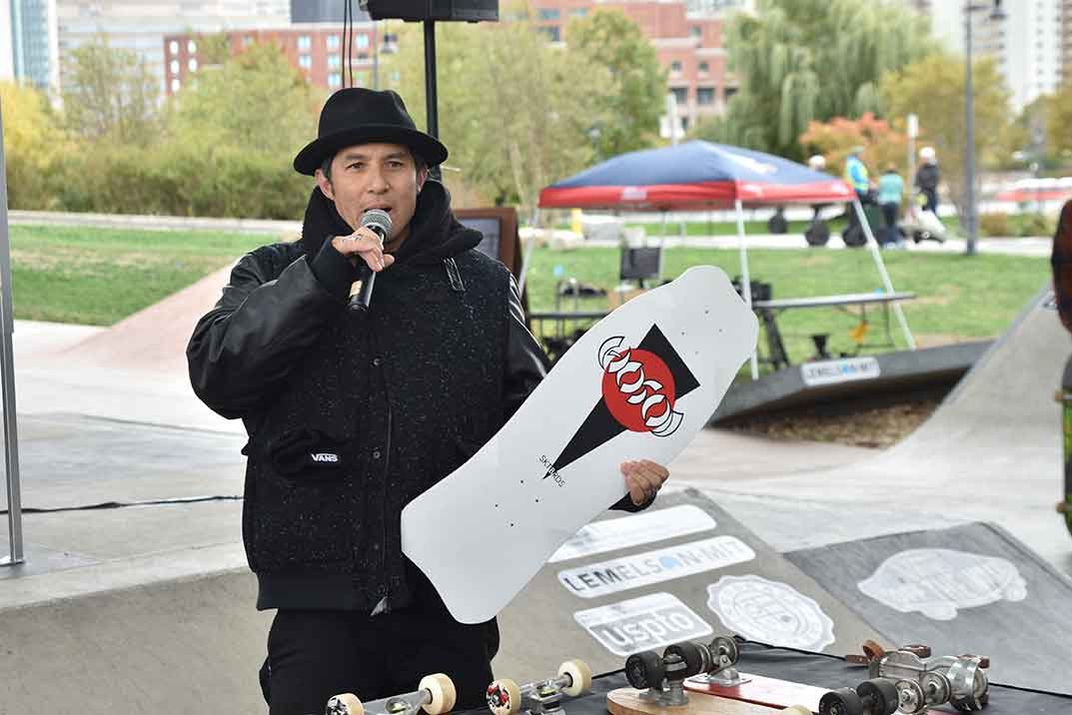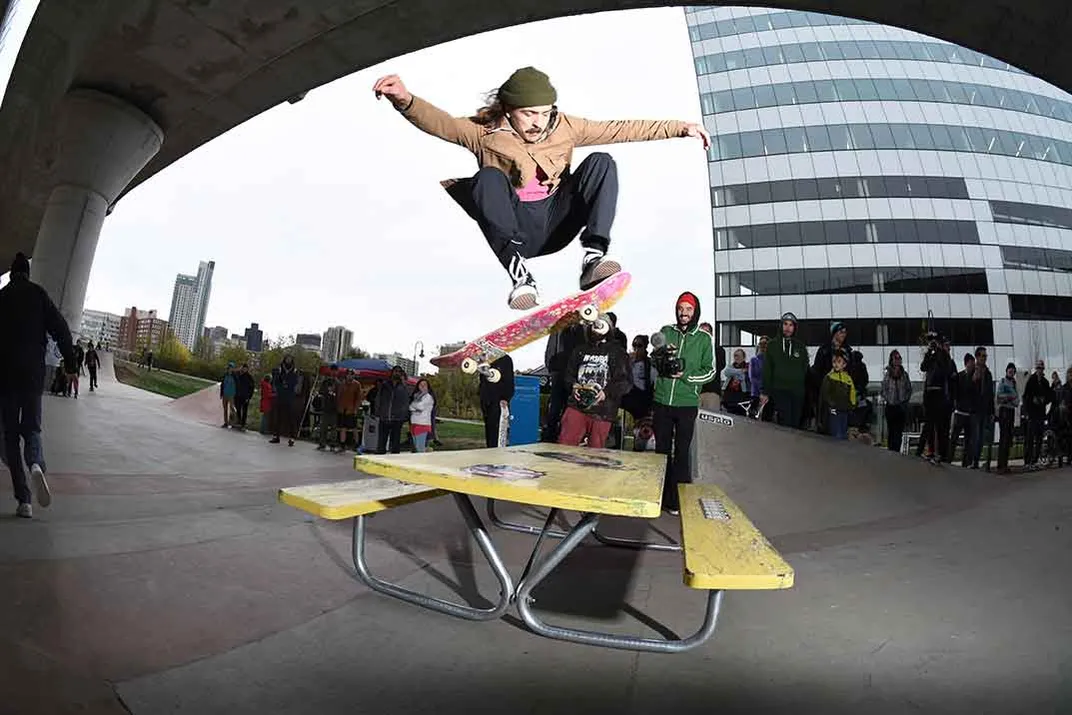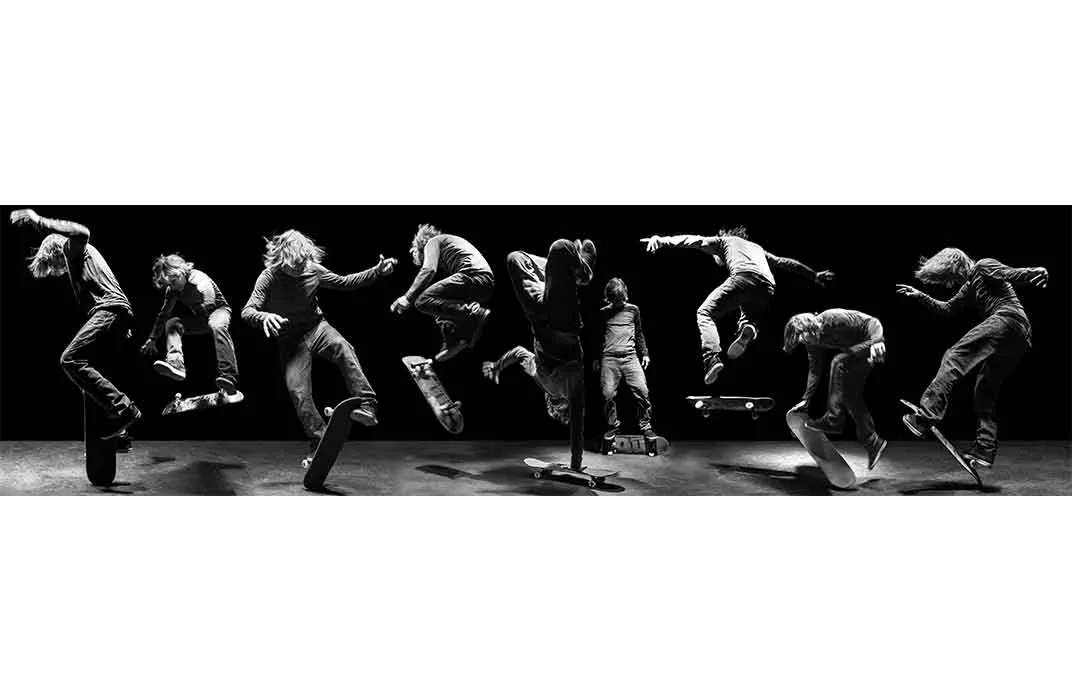What Skateboarding Tells Us About Innovation
Rodney Mullen, the godfather of skateboarding, says the sport is all about overcoming disbelief and seeking new connections
Rodney Mullen tore his own hip joint apart on purpose. “Sheer desperation,” he says by way of explanation. “Doctors would not recommend it.”
By 2003, after nearly 30 years of skateboarding—if you’ve ever seen kids skating, you’ve seen tricks Mullen devised—the legendary athlete had pummeled his right hip joint so much that scar tissue and the grinding of bone on bone had gotten the joint stuck in a single track.
He couldn’t skate. He couldn’t stand it.
Mullen says his doctors told him there was a treatment for smaller joints that get stuck like this. But a hip joint was too big and too risky. “They put you to sleep and they put something like a boat clamp to you and they chhhkk,” he says, with a snapping motion.
“They don't want to go bigger than shoulders,” he says. He feared that without treatment, he wouldn't be able to skate again. Eventually he got desperate enough to try doing it himself.
He started exerting huge amounts of painful pressure on his own joint, hoping to tear the scar tissue a tiny bit at a time. He braced himself against shopping cart racks, fire hydrants, and the wheel well of his truck. Twice while he was doing this, police came by to investigate because he was screaming so loudly they thought someone was being mugged.
The whole process took about seven years. “A grain of sand at a time,” he says. “Just a little bit, without being put to sleep, or just tearing myself. It was horrible. But you get through it, you know?” He did get through it, and by 2010 had recovered full rotation in his right hip.
Self-administering an unprecedented medical procedure isn’t exactly something most people aspire to, but in Mullen’s life, desperation is far from the only thing that’s led to innovation.
Mullen, now 50, has been skateboarding since he was ten, and it’s no exaggeration to say that he created modern skateboarding. He invented the foundational tricks of the sport, like the flatground ollie, in which a skater levitates her board using nothing but her feet. He’s self-deprecating and soft-spoken, but seeing him, for a skateboarder, is like a sandwich aficionado meeting the inventor of bread.
“What Rodney won’t tell you is that he invented 80, 90 percent of what modern street skateboarding is: the tricks that kids do all over the world today,” says Josh Friedberg, secretary general of the International Skateboarding Federation.
Mullen recently spoke at this year’s Innoskate, a program co-sponsored by the Smithsonian’s Lemelson Center for the Study of Invention and Innovation, at which Christian Hosoi and Steve Van Doren also donated two historically important skateboarding objects—an original 1985 Hosoi Hammerhead Pro Model Deck skateboard and the original industrial mold used to produce the Vans waffle sole shoe, which became the iconic skateboarding shoe—to the Smithsonian's National Museum of American History.

Mullen discussed his sources of invention in skateboarding—a combination of deep knowledge of trick structure, deliberate experimentation and sharp shoves into uncharted territory—with a panel of scientists, photographers and filmmakers at MIT.
When Mullen first started skateboarding, the timing was perfect for invention. He considers himself lucky to have started at a time when his inspiration was the kid down the street rather than an accomplished skating expert, and a time when the sport was still coalescing. “It wasn't like I analytically looked to see, this is a nascent sport and I have this opportunity—it’s not like that. You just look around, like, ‘That looks cool, and I bet I can do all kinds of cool stuff with this. This is wide open.’
“Whereas I think it would be really intimidating right now. You walk in starting fresh, these kids are like, where to start now? And you look and it's all this crazy polished stuff and each one looks like it would take years, like watching gymnasts and stuff. And that's so intimidating to me. It wasn't like that when I started.”
Now, with more experience, Mullen sees skateboarding tricks like syllables that he can string together into different words and sentences. He says that to create a new trick, he tries to “nurture the nodes” of connection between different components. “You tweak the heads and tails of the syllables,” he says, “In a very physical way. It’s very real—it’s all energy.” Some combinations flow better than others.
But for Mullen, deliberate experimentation isn’t the whole story. “Innovation or creativity, it comes not so much by logical deduction. You can only go so far with that. Real new ideas are always in the form of epiphanies. They just snap.”

“If you tinker with the nodes,” Mullen says, “all you're doing is tinkering, and then you take it someplace new,” for example, a steeper or gentler slope, which changes the skateboard’s momentum. “And it's as though you're giving a new force to punch it, and it will break out into this new beautiful singular new trick: a fracture. That's singular and unique. In fact, it was being nurtured the whole time...It just takes one little touch for it all to snap into place.”
“A new trick, it's a lightning strike.”
Most recently, the new place where Mullen took many of his tricks was a dome filled with 100 cameras in a 360-degree array, the brainchild of filmmaker Steven Sebring. The result of Mullen and Sebring’s collaboration is the short 360-degree film Liminal, which includes some tricks that Mullen invented in the claustrophobic dome.
“When I got in there, immediately I was enthralled with how beautiful it looked,” says Mullen. It was also disorienting, which was part of the beauty. “It’s a little space capsule, it's all black,” he says. Being in the confines of the dome took his tricks out of historical context, which helped him recombine them in new ways. “I thought, ‘What if there could be a fusion of eras, from the oldest of the freestyle stuff, stuff that I hadn't done in 20 years, to the most modern that I'm still trying to work out?”

Collaborating with filmmakers was also a revelation. “The editor. . .created this living piece of just the rejects of stuff that was embarrassing to me,” says Mullen, “made of stuff that from a skater’s perspective it hurt how bad it was. It creates something beautiful that tells the story of the skating and the failure too. The epiphany is. . .what’s hard is different than what’s beautiful.”
Sebring and Mullen’s project is especially resonant given the role that video and video games have played in skateboarding innovation.
“What's happened in skateboarding is these pro skater video games came out,” like Tony Hawk Pro Skater, Friedberg explains. “And there are people doing tricks in these games that no one had done on a skateboard, because it's a physics engine and it can flip the board and do this trick.” As a result, skaters suddenly saw new tricks that were technically possible, but that no human had ever done.
There was already a strong culture of videotaping tricks in skateboarding, and the filming had already changed how skateboarders learned, Friedberg says. Kids would watch a video of a pro skater and it would change what they thought they themselves were capable of learning, to the point where it would actually help them learn faster. “Kids see videos of Tony Hawk and they go, ‘Oh, all that stuff's possible.’ So now you have nine-year-olds who are doing 900s on a ramp. That was something that took the skate community two and a half decades to do.”
“It’s so fundamental to what we do, breaking through this barrier of disbelief,” Mullen says. “That's the biggest obstacle to creativity. It’s rarely a question of ability; it's rarely a question of tactic or studying motion. We all study motion, but that's usually not what makes the difference if you're like the top ten or 20 best guys trying a trick. You just have to watch someone make it, the fact that he made it, and then the rest come like lemming, they really do. They just—kids that are not even that good are outdoing guys who've spent their whole life doing this, you know? And because they see, it's just smashing the barriers of disbelief.”
Mullen’s gift is a kind of visual and kinetic imagination—being able to see things in his mind that don't exist, things that the rest of us have to see to believe.


